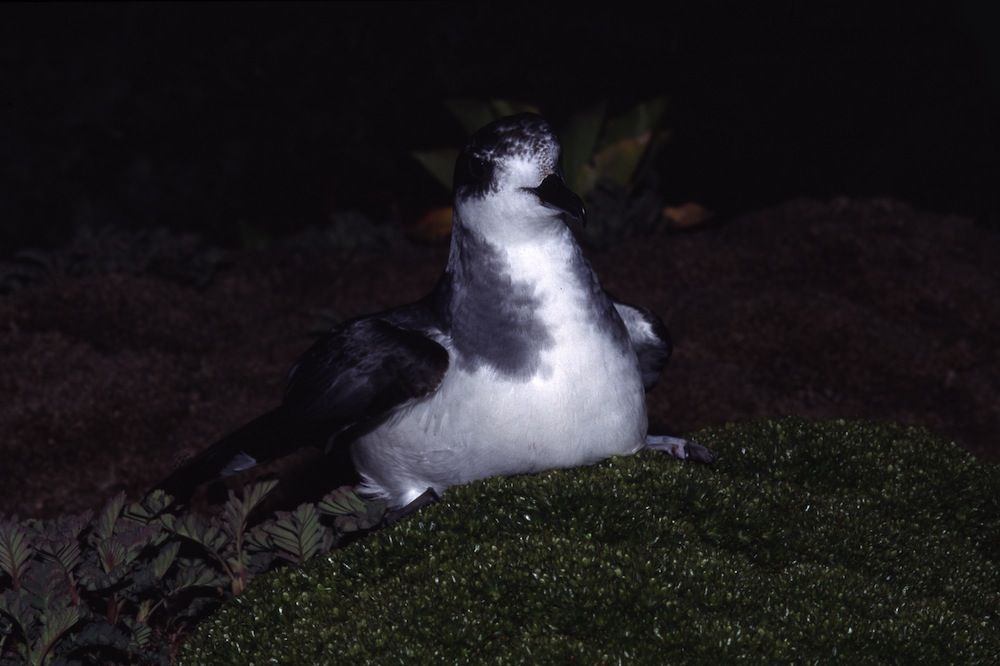Seabirds Use The Sniff Test to Avoid Incest

Birds rarely get much attention for their sense of smell, but a new study finds that some seabirds may use their noses to avoid breeding with close relatives.
The study, published April 26 in the Journal of the Royal Society: Biology Letters, found that mice can sniff out differences between petrels (a type of seabird), indicating that the birds' odors are, in fact, distinct from one another.
Blue petrels, which live in the southern oceans and nest in huge island colonies, mate for life. Monogamous pairs have just one chick per year. Like some mammals, certain petrel species have been shown to prefer their mate's odor over their own, suggesting that smell may be one way the birds avoid mating with their own relatives in the dense nesting grounds.
Using mice to sniff out petrels
But testing the uniqueness of petrel smells is difficult. Because the birds breed so infrequently and live on remote islands, it's not easy to collect enough samples for extensive chemical testing. So researcher Aurelie Celerier of the Centre d'Ecologie Fonctionnelle et Evolutive in France turned to mice. With their keen sense of smell, mice can act like biological "noses" that can be used to analyze different odors, Celerier and her colleagues wrote.
The researchers captured 40 blue petrels and 14 of their chicks on the Kerguelen Archipelago in the southern Indian Ocean. They rubbed a cotton swab over each bird's back, underwing area and rump. (The birds smell musky to the human nose, the researchers wrote.)
Back at the lab, the researchers presented a petrel smell sample to the mice and let them habituate, or get used to, the smell. Next, the habituated mice got to sniff the now-familiar smell plus the odor of an unfamiliar petrel. In a second experiment, mice habituated to a chick odor sample and then got to sniff a sample from both an unrelated petrel adult and from one of the chick's parents. If the mice recognized a difference between the two smells, the researchers hypothesized that the mice would investigate the new -- and therefore more intriguing -- smell more often.
Sign up for the Live Science daily newsletter now
Get the world’s most fascinating discoveries delivered straight to your inbox.
The nose knows
That's exactly what they did, the researchers found. When presented with the odor of an unrelated petrel, the mice investigated it 55 percent of the time, a rate greater than chance. The mice could tell that parent and chick odors came from different sources, the researchers found, but they also preferred to investigate the smell of an unrelated petrel after becoming bored of a chick's odor. That suggests petrels do have unique smells and that baby bird odor is more similar to Mom's and Dad's smell than to an unrelated bird, the researchers wrote.
In addition, the smell differences between baby birds and their parents didn't seem to emerge until right before fledging, when the feathers mature. The timing suggests that baby's unique smell may come from the uropygial gland, or "preen gland," which secretes oil that birds use to clean their feathers, the researchers wrote.
The experiment can't definitively prove that smell is the only way birds recognize their relatives, but the findings could explain previous research showing that petrels prefer smells that aren't their own.
You can follow LiveScience senior writer Stephanie Pappas on Twitter @sipappas. Follow LiveScience for the latest in science news and discoveries on Twitter @livescience and on Facebook.

Stephanie Pappas is a contributing writer for Live Science, covering topics ranging from geoscience to archaeology to the human brain and behavior. She was previously a senior writer for Live Science but is now a freelancer based in Denver, Colorado, and regularly contributes to Scientific American and The Monitor, the monthly magazine of the American Psychological Association. Stephanie received a bachelor's degree in psychology from the University of South Carolina and a graduate certificate in science communication from the University of California, Santa Cruz.












